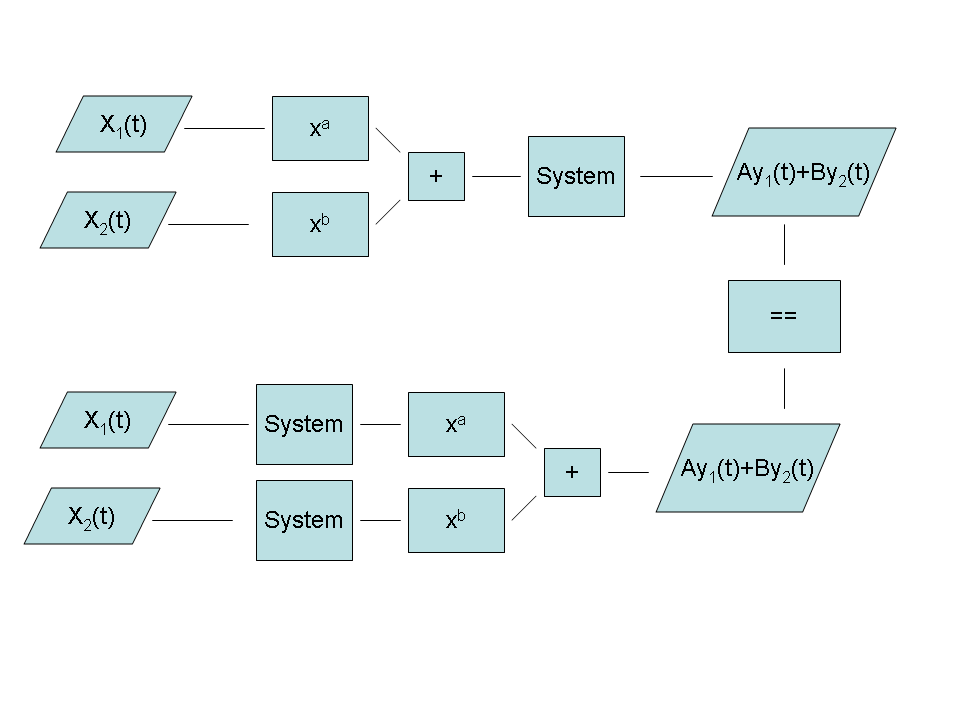(New page: A system is called linear if: Image:Linearity.png) |
|||
| Line 2: | Line 2: | ||
[[Image:Linearity_ECE301Fall2008mboutin.png]] | [[Image:Linearity_ECE301Fall2008mboutin.png]] | ||
| + | |||
| + | |||
| + | ==Examples== | ||
| + | |||
| + | A Linear System: | ||
| + | |||
| + | <math> y(t) = 2x(2t) </math> | ||
| + | |||
| + | <pre> | ||
| + | x1(t) -> Ax1(t) | ||
| + | |+| Ax(t) + Bx(t) -System-> 2Ax1(2t) + 2Bx2(2t) | ||
| + | x2(t) -> Bx2(t) | ||
| + | |||
| + | x1(t) -System-> 2x1(2t) -> 2Ax1(2t) | ||
| + | |+| 2Ax1(2t) + 2Bx2(2t) | ||
| + | x2(t) -System-> 2x2(2t) -> 2Bx2(2t) | ||
| + | </pre> | ||
| + | Therefore, this system is linear | ||
Revision as of 11:08, 11 September 2008
A system is called linear if:
Examples
A Linear System:
$ y(t) = 2x(2t) $
x1(t) -> Ax1(t)
|+| Ax(t) + Bx(t) -System-> 2Ax1(2t) + 2Bx2(2t)
x2(t) -> Bx2(t)
x1(t) -System-> 2x1(2t) -> 2Ax1(2t)
|+| 2Ax1(2t) + 2Bx2(2t)
x2(t) -System-> 2x2(2t) -> 2Bx2(2t)
Therefore, this system is linear


